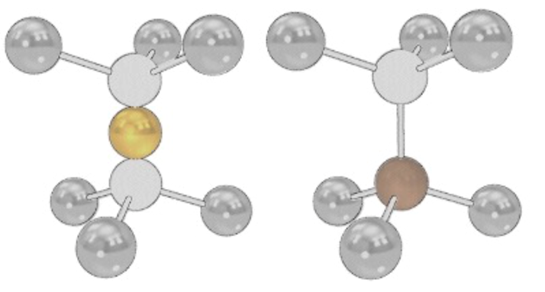
Amazon Web Services Taps Partner to Advance Quantum Networking
Amazon Web Services is partnering with synthetic diamonds manufacturer Element Six to explore ways to develop and improve synthetic diamonds for quantum networking. The collaboration aims to develop a scalable synthetic diamond solution consistent with efficient photon-spin interaction and control, which could be used to advance the development of quantum technologies.
The number of undesired defect atoms in natural diamond reduces the coherence, optical, and spin properties of color centers — for example, the nitrogen-vacancy center (NV) and the silicon-vacancy center (SiV). The advent of synthetic diamond growth has made reducing these undesired imperfections possible. Further, advancements in plasma-enhanced chemical vapor deposition (PECVD) over the last 20 years have enabled the growth of individual plates of diamond with sufficient purity and orderliness for quantum applications. PECVD growth enables the formation of diamonds where fewer than one in a million atoms are impurities — compared to one in a thousand for most natural diamonds.
As a result, synthetic diamond is a leading solution for applications in quantum communication, where the material can be used as a node in the development of quantum networks. Diamond memory nodes help grow networks by facilitating quantum communication over long distances, which requires quantum memory nodes with efficient optical interfaces and long memory times. Quantum networks consist of two types of nodes: backbone nodes and end-user nodes. End-user nodes use traditional telecommunications resources such as lasers and detectors to communicate with the backbone nodes. Backbone nodes, on the other hand, will require a new type of infrastructure: a quantum repeater, which is roughly analogous to amplifiers in classical communication networks.
The core element of a quantum repeater is a memory qubit that interfaces with light. This qubit catches the information encoded on light, stores it, and, together with other nearby qubits, performs error correction to eliminate any errors that may have occurred during communication.
To be viable, these memory qubits require reliable interactions with light in the visible or telecom domain, ruling out many of the leading qubit candidates from quantum computation, such as superconducting qubits.
This requirement, as well as the need for these memory qubits to be mass-producible, makes defect qubits — color centers in diamond, for example — leading candidates as quantum repeater memories. When light bounces off a color center, it can flip this spin qubit, making possible the transfer of information between light and the spin memory in what is known as a spin-photon interface.

These diagrams of the NV (left) and SiV (right) show their atomic configuration inside the diamond lattice. In each case, carbon atoms (silver) are displaced by vacancies (white with black outline) and defect atoms (nitrogen in brown, silicon in gold). Courtesy of AWS Center for Quantum Networking.
Element Six is a subsidiary company of the De Beers Group, a London-based diamond consortium and company. Element Six partnered with photonics company II-VI (now Coherent Corp.) in 2022 to enable II-VI to use its single-diamond crystal technology to develop applications in quantum computing, among other areas. Element Six will specifically team with Amazon Web Services’ Center for Quantum Networking on the partnership.
/Buyers_Guide/Element_Six_Ltd/c30770
/Buyers_Guide/Element_Six_Technologies/c5910